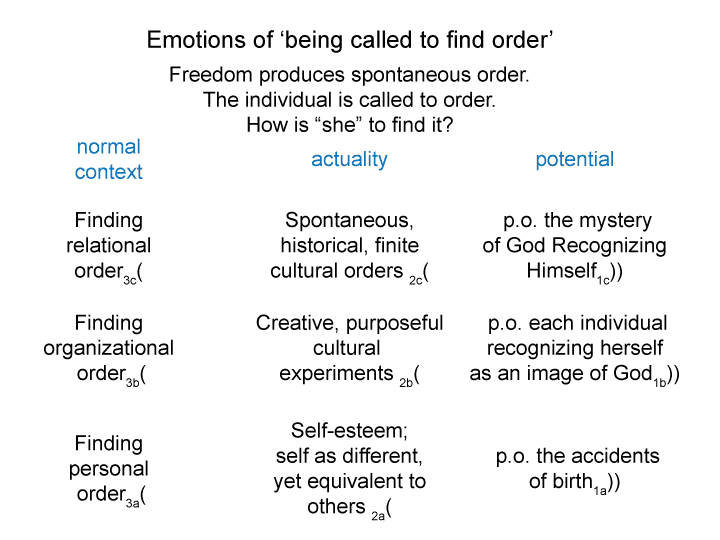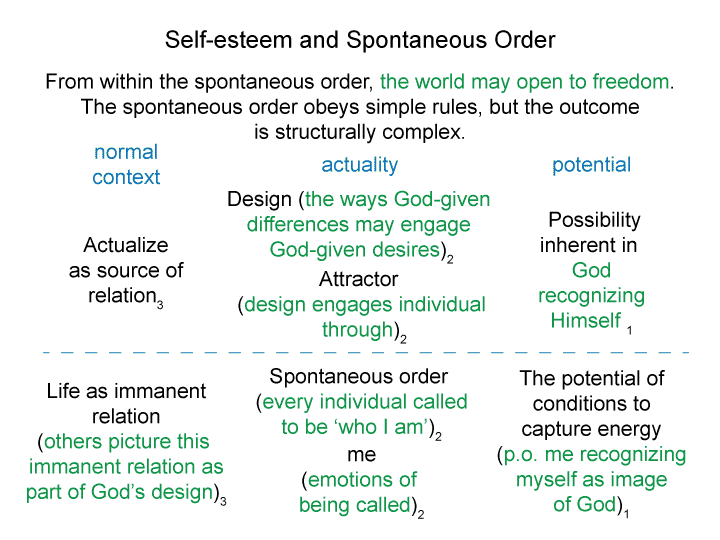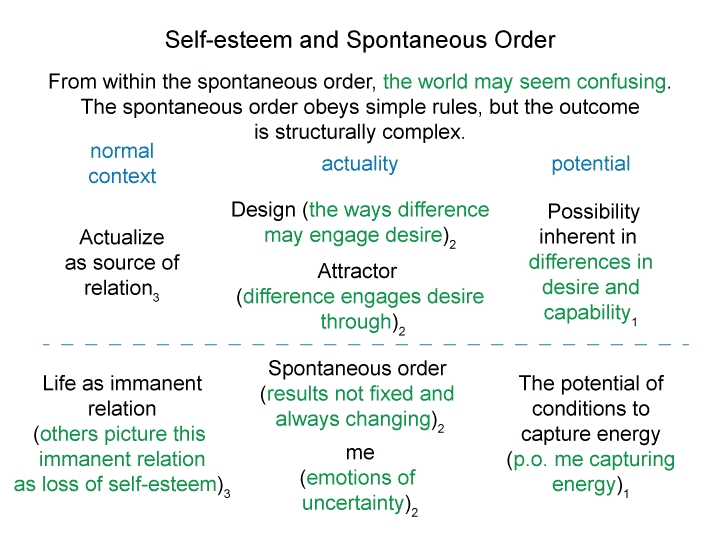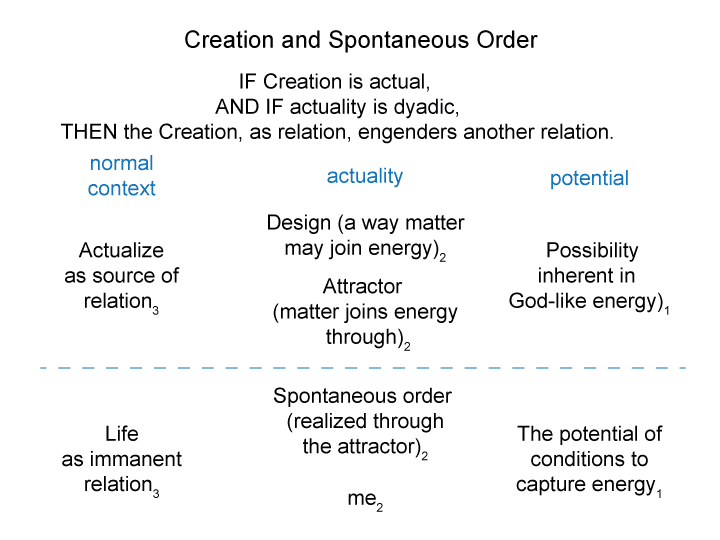[Our individual success depends on the dynamics of the spontaneous order. We are experiments. The outcome of each experiment is not predetermined.
From this point of view, our “lack of self-esteem” reflects “our emotional reactions to the tentative world of a social spontaneous order”. Life is scary. We are limited creatures. The challenges are abundant.
The cure for our fears does not rest in the spontaneous order. Nor does it reside, as Progressives will never tire in saying, in making the world “more fair” (that is, more lifeless). It becomes apparent when looking through the spontaneous order towards “the actuality that conditions the existence of the spontaneous order itself”.
I look through the spontaneous order toward the attractor. The attractor is contiguous with the unseen design.
Here is a parallel way of saying this. This parallel way leads to certainty:
I look through Jesus the Son of Man (who I know and image within my own unique actuality) to see Jesus the Christ (the attractor), who sits at the right hand of the Father (the unseen design, encompassing all the ways we engage in desire for God).
This is why, when one person dies, an entire world is lost. Each person is the most valuable of God’s creations.]




